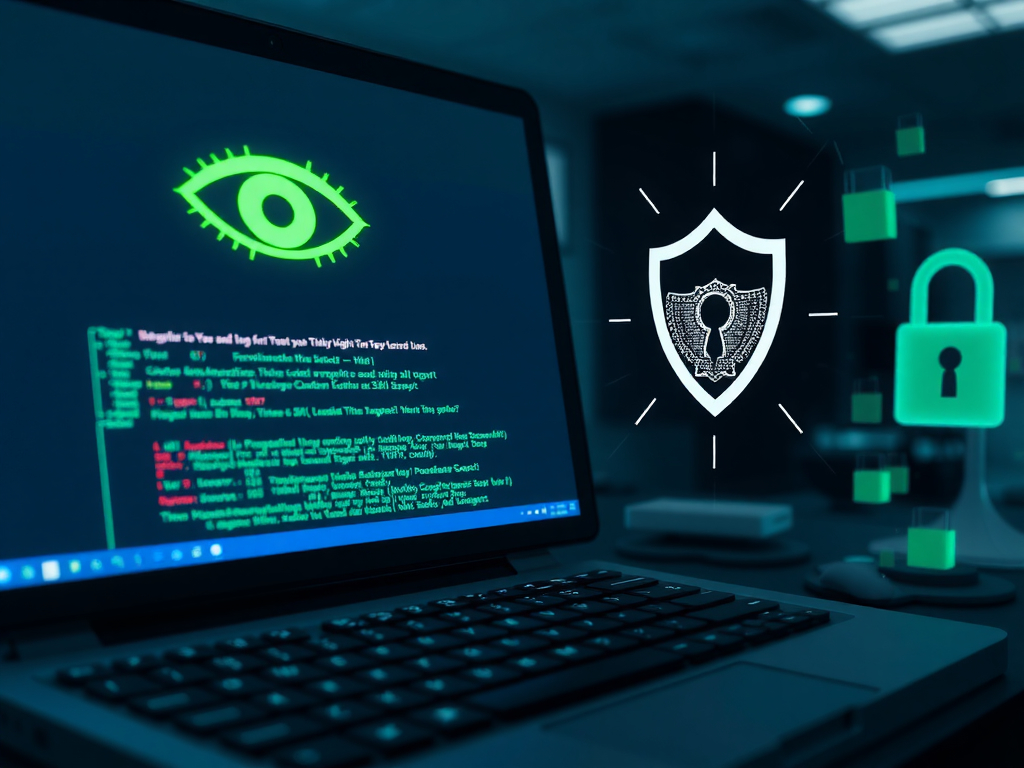Threat Overview
The TinkyWinkey keylogger represents a sophisticated threat to Windows-based systems, leveraging advanced techniques for stealth and data capture. This malware uses persistent service execution, low-level keyboard hooks, and comprehensive system profiling to gather sensitive information.
Technical Details
The TinkyWinkey keylogger employs a variety of methods to maintain its presence on compromised systems:
- Persistent Service Execution: The malware installs itself as a Windows service, ensuring it runs continuously even after system reboots. This method provides a reliable way for the malware to stay active and avoid detection.
- Low-Level Keyboard Hooks: By using low-level keyboard hooks, TinkyWinkey can capture all keystrokes, including special keys and multi-language input. This comprehensive data collection makes it difficult for users to detect the malware through ordinary means.
- System Profiling: The keylogger gathers detailed system metrics such as CPU information, memory usage, OS version, and network identifiers. This data can be used by attackers to further tailor their malicious activities or sell the compromised systems on underground markets.
The malware uses several techniques for execution:
- Command and Scripting Interpreter (T1059): It executes commands through scripting interpreters to perform malicious actions discreetly.
- Shared Modules (T1129): TinkyWinkey can share code with other processes, making it harder for security tools to detect its presence.
- Service Execution (T1569.002): The malware registers itself as a Windows service to ensure persistent execution.
- System Binary Proxy Execution: Rundll32 (T1218.011): It can leverage legitimate system binaries like rundll32.exe to execute its payload, bypassing security controls.
The malware also employs persistence mechanisms:
- Create or Modify System Process: Windows Service (T1543.003): It installs itself as a service to ensure continuous operation and survival of reboots.
For defense evasion, TinkyWinkey uses:
- Reflective Code Loading (T1620): It dynamically loads code into memory to avoid detection by traditional antivirus solutions.
- System Binary Proxy Execution: Rundll32 (T1218.011): Again, it uses legitimate system binaries to execute malicious actions without raising alarms.
- Virtualization/Sandbox Evasion (T1497): It includes techniques to detect if it is running in a virtualized or sandboxed environment and alter its behavior accordingly.
The malware engages in several discovery activities:
- Process Discovery (T1057): It identifies running processes to determine the best ways to inject code or evade detection.
- System Information Discovery (T1082): It gathers detailed information about the system, including hardware and software configurations.
- File and Directory Discovery (T1083): It searches for specific files or directories to locate valuable data or other malware components.
- Software Discovery (T1518): It identifies installed software, especially security tools, which it can then attempt to disable or bypass.
- Security Software Discovery (T1518.001): Specifically targets discovering and potentially disabling installed security software.
- System Location Discovery: System Language (T1614.001): It determines the language settings of the system to adapt its behavior accordingly.
The malware also focuses on credential access:
- Input Capture: Keylogging (T1056.001): Captures all keystrokes, providing attackers with a wealth of sensitive information such as passwords and personal data.
The malware performs collection activities:
- Input Capture: Keylogging (T1056.001): Again, it captures all keystrokes to gather sensitive information.
The malware can also impact system operations:
- Service Stop (T1489): It has the capability to stop essential services, potentially causing disruptions or data loss on the compromised systems.
Indicators of Compromise (IOCs)
- Sha256 Hashes:
- svc.exe: fe6a696e7012696f2e94a4d31b2f076f32c71d44e4c3cec69a6984ef0b81838a
- winkey.exe: 7834a64c39f85db5f073d76ddb453c5e23ad18244722d6853986934b750259fd
- keylogger.dll: eb6752e60170199e4ce4d5de72fb539f807332771e1a668865aac1eee2c01d93
Recommendations
The following recommendations are provided to mitigate the risks posed by TinkyWinkey:
Strategic Recommendations:
- Implement organization-wide endpoint detection and response (EDR) policies to proactively identify and mitigate advanced malware threats.
- Establish a robust cybersecurity awareness program to educate employees about the risks of downloading unverified software from public repositories.
Tactical Recommendations:
- Conduct regular threat hunting exercises focusing on anomalous service creation, DLL injection, and persistent logging activities.
- Maintain and update threat intelligence feeds to include emerging keylogger signatures and techniques, enabling faster detection.
Operational Recommendations:
- Enforce strict application whitelisting and least-privilege policies to prevent unauthorized execution of malware like TinkyWinkey.
- Schedule periodic audits of system services, startup entries, and temporary directories to detect unusual files or processes.
Technical Recommendations:
- Deploy host-based intrusion detection systems (HIDS) to monitor low-level keyboard hooks, API calls, and suspicious process injections.
- Enable centralized logging and real-time monitoring of Windows system calls, file writes, and network connections to detect anomalous activity early.
Conclusion
The TinkyWinkey keylogger represents a highly capable and stealthy threat that combines advanced techniques for persistent execution, low-level data capture, and comprehensive system profiling. Its ability to operate undetected while gathering sensitive information underscores the importance of maintaining robust cybersecurity defenses.


